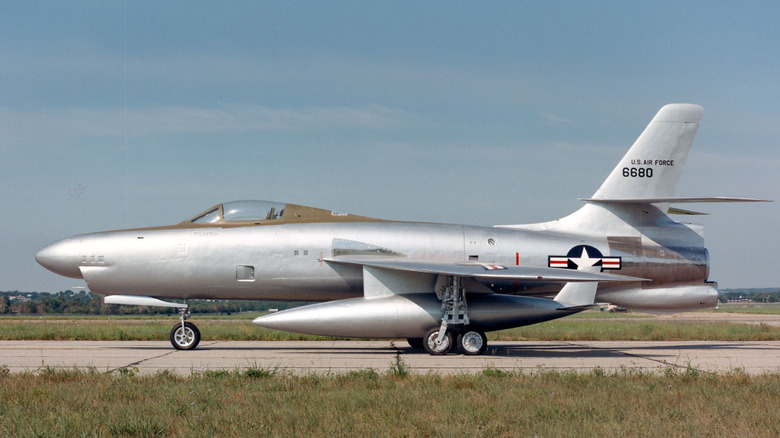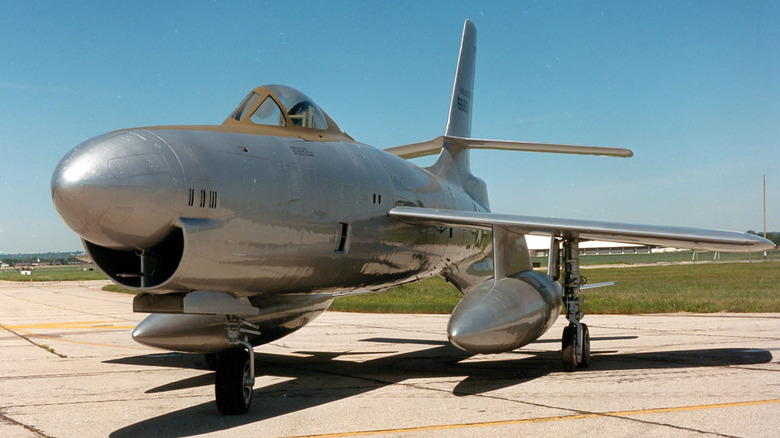America's Rocket-Powered Pioneer: The XF-91 Thunderceptor
In 1945, Bell Aircraft Corporation received a government contract to build an aircraft that could reach above and beyond the speed of sound. On October 14, 1947, then-U.S. Air Force Capt. Charles E. "Chuck" Yeager climbed in the cockpit of a Bell X-1. Named "Glamorous Glennis" for Yeager's wife, the X-1 was launched from a B-29 and hit 42,000 feet of altitude as it broke the sound barrier by taking the jet to a speed of over 700 miles per hour. As such, this aircraft is ultimately credited with ushering in the age of supersonic flight.
However, there is another lesser-known contender in the aviation race that was designed by the U.S. military in conjunction with a company called Republic Aviation to serve as a faster-than-sound fighter jet. Unfortunately this aircraft — known as the XF-91 Thunderceptor — never saw the light of day. Despite being the first fighter to break the sound barrier, it was shuttered. Here's why.
Why the Thunderceptor never made it
The Republic XF-91 Thunderceptor was designed in the 1940s to be an interceptor (to defend against attack from enemy aircraft). However, it became "America's first rocket-powered fighter to fly faster than the speed of sound," according to Air Force records. The distinction here is that the Thunderceptior was designed specifically for combat, as opposed to a research airplane.
It was equipped with General Electric engines that could put out 6,700 pounds of thrust, and it also featured a Reaction Motors rocket with 6,000 pounds of thrust. The X-91 boasted a top speed of 948 miles per hour and a regular cruising speed of 560 mph. Its first test flight took place on May 9, 1949, but by 1955, it was moved to storage.
Unfortunately, there were two issues that resulted in the cancellation of the XF-91 Thunderceptor program: lack of funding and its poor fuel capacity, which, according to the Air Force, meant it couldn't sustain flight for more than 25 minutes. Only two Thunderceptor prototypes were ever manufactured.

